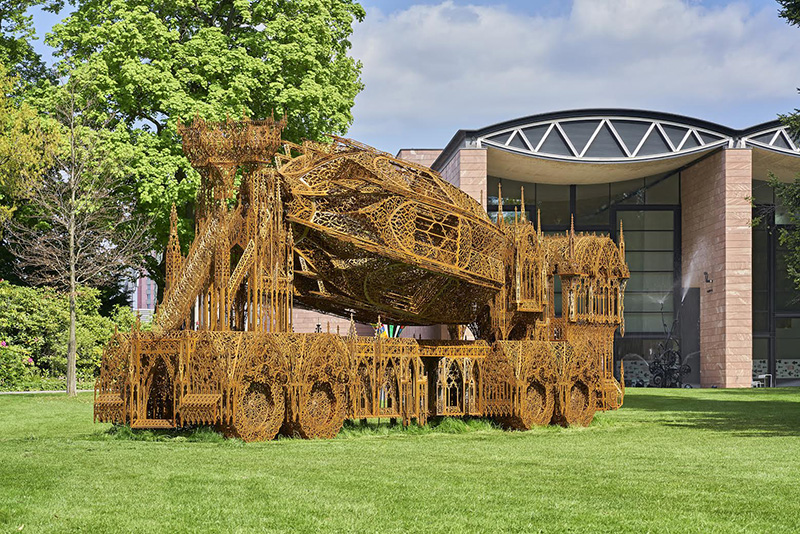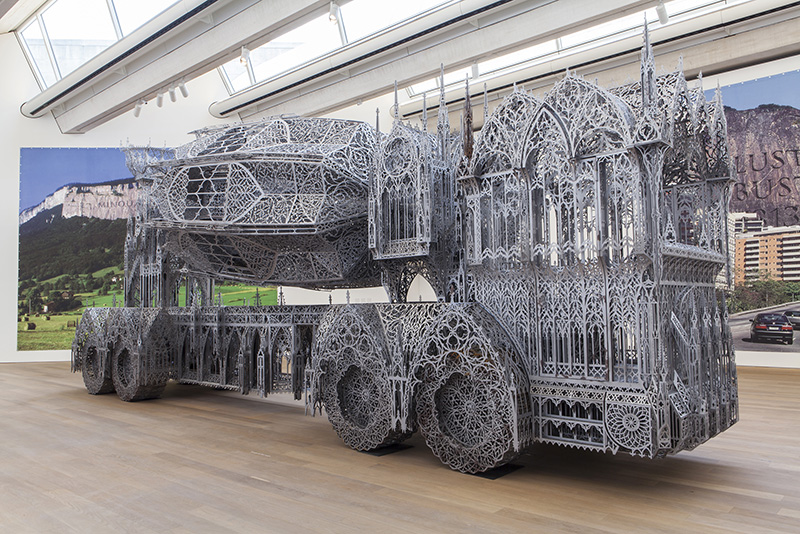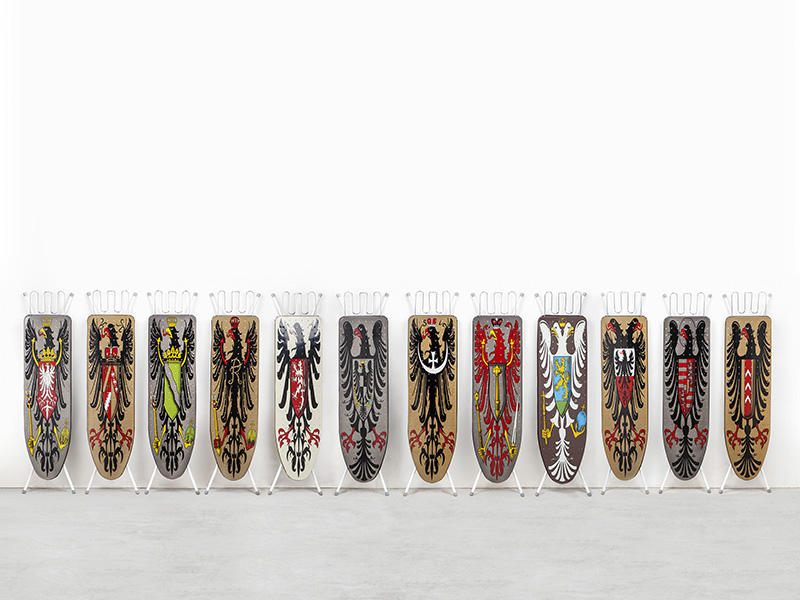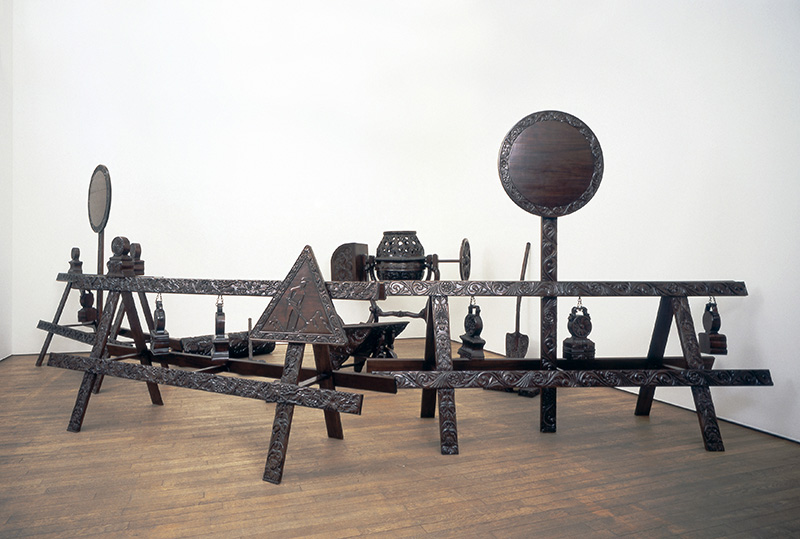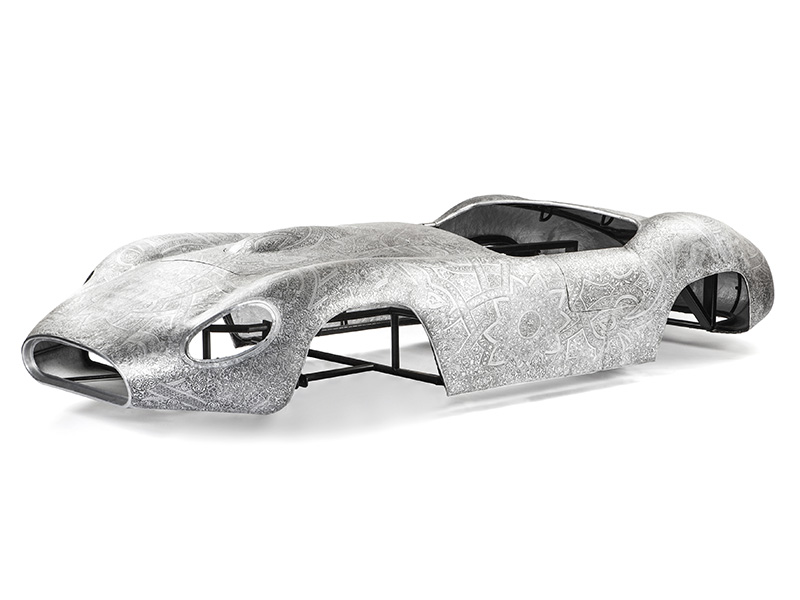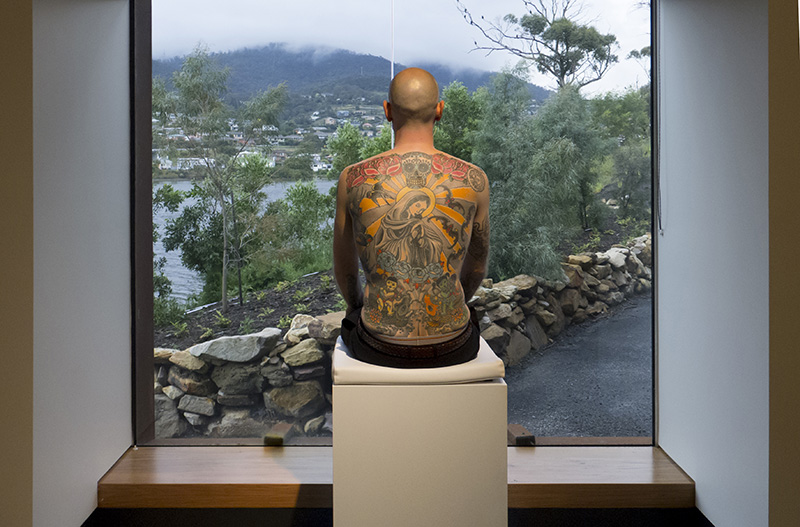ART CITIES:Basel-Wim Delvoye
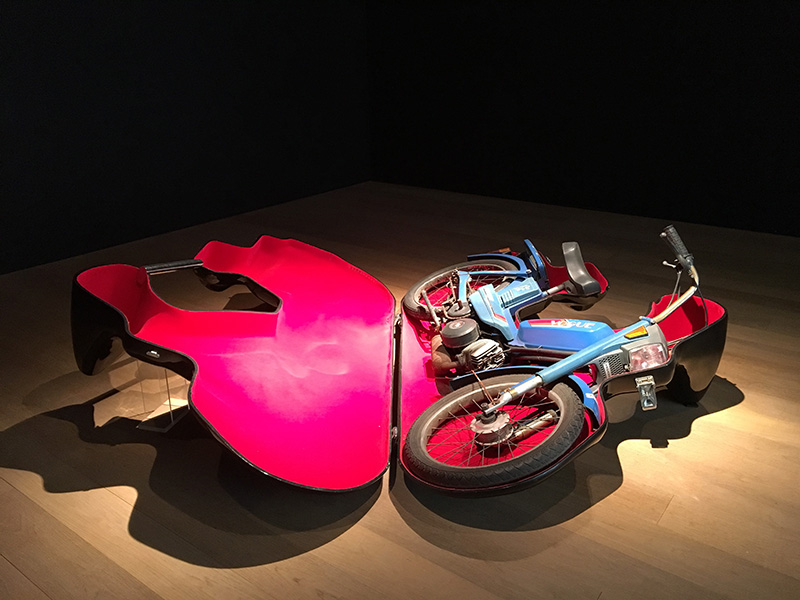 Wim Delvoye’s work is a fusion of deeply philosophical ideas, an experimental approach to the use of materials, and a deep immersion in the techniques of craftsmanship. The neo-conceptual artist brings together elements across time and space to create artworks that are at once shocking and stunningly beautiful. As he travels across world, Delvoye immerses himself in local cultures. “I don’t feel I belong anywhere, I feel like a nomad. So I take inspiration from different cultures, whilst being very respectful of the places I go to”.
Wim Delvoye’s work is a fusion of deeply philosophical ideas, an experimental approach to the use of materials, and a deep immersion in the techniques of craftsmanship. The neo-conceptual artist brings together elements across time and space to create artworks that are at once shocking and stunningly beautiful. As he travels across world, Delvoye immerses himself in local cultures. “I don’t feel I belong anywhere, I feel like a nomad. So I take inspiration from different cultures, whilst being very respectful of the places I go to”.
By Dimitris Lempesis
Photo: Museum Tinguely Archive
The first major retrospective of Wim Delvoye in Switzerland, is on presentation at Museum Tinguely in Basel. Since the late ‘80s, Delvoye has been known for works that rest on intelligently witty admixtures of the profane with the sublime, where tradition clashes with utopia, and craftsmanship with high-tech. Probably his best known works are his “Cloacas”, which mechanically reconstruct the physiological processes that take place inside the human body between ingestion and excretion and so visualise one of the basic constants of our existence. The artist’s replicas of construction machinery and trucks using Gothic-style ornaments attest to his delight in aesthetic experimentation and monumental works based on professional constructions and built out of laser-cut steel plates. Delvoye’s work is rooted in his own Flemish heritage with its love of tradition, craftsmanship, and engineering combined with an openness to the world, at the same time, Delvoye is one for whom national borders have no meaning, which is why he works with artisans in Indonesia, China or Iran. His “Ironing Boards” (1990) bear the coats of arms of his home country, while his “18 Dutch Gas-Cans” (1987-88) are decorated with Delft porcelain painting. The solid steel tubes in “Chantier V” (1995) are supported by specially made porcelain feet, while some of the concrete mixers and barriers in “Chantier I” (1990-92) are made of artfully carved wood. Media intermingle; materials are suspended in a creative tension. The banal is embellished to make it art; folk art becomes a museum piece. Delvoye created his first “Cloaca” in 2001 and by 2010 there were nine more of them. These complex machines use enzymes and other substances to reconstruct the process of human digestion under laboratory conditions. The entire human digestive tract from mouth to anus is here rebuilt in isolation from the rest and so rendered visible. What counts is not the shape of the individual organs but solely their function. The Belgian artist regularly pushes the boundaries of his work, forcing audiences to question the ethics of art like in “Tim” (2006-08). Tim Steiner was tattooed by the artist, the design on his back he volunteered to be the canvas for involving a Madonna surrounded by Asian and African ritual symbols and taking 40 hours to complete. In 2008, the work was sold to a German Art Collector with Steiner getting a third of the sum. As part of the deal, Steiner has agreed to be skinned after his death, with his skin being permanently framed and residing his Collection. Another highlight of the exhibition is “Cement Truck” (2012-16), which is set up in Solitude Park next to Museum Tinguely. This full-size vehicle is made of Corten steel plates which have been laser cut to reproduce neo-Gothic tracery and ornaments. The same aesthetic informs the drop-shaped “Suppo” (2010), a neo-Gothic cathedral model comprising only a single twisted and contorted spire with ornamentation.
Info: Curator: Andres Delvoye, Museum Tinguely, Paul Sacher-Anlage 2, Basel, Duration14/6/17-1/1/18, Days & Hours: Tue-Sun 11:00-18:00, www.tinguely.ch
